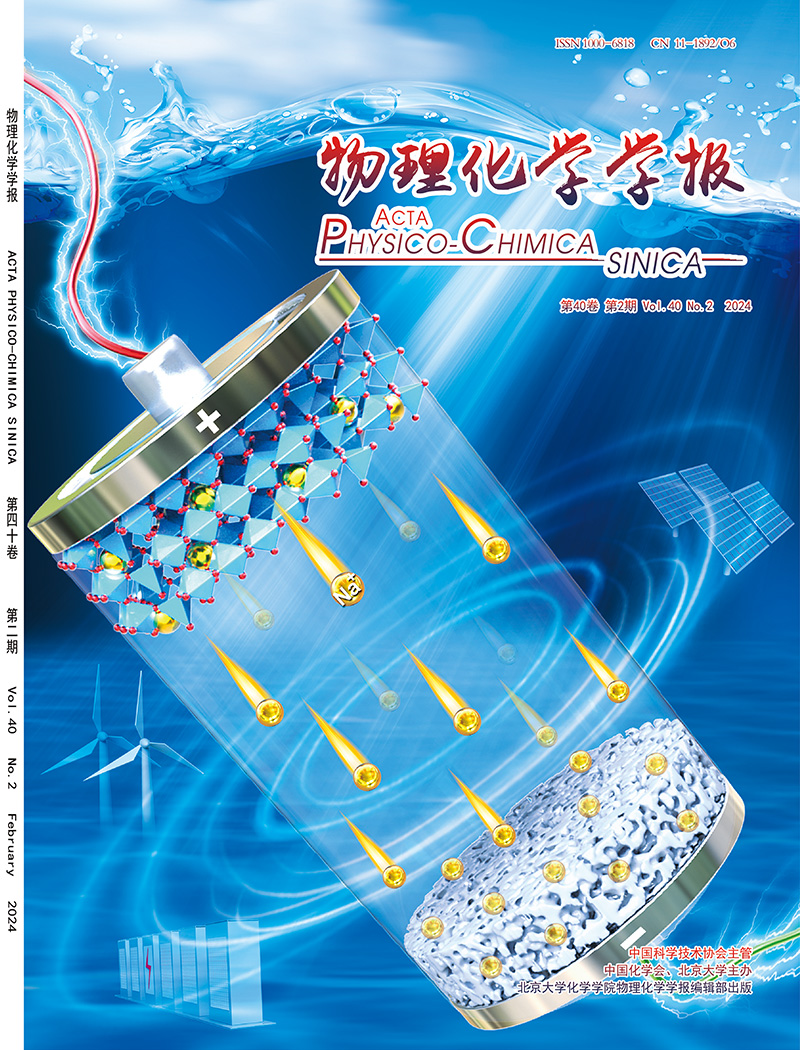Decoding the interfacial competition between hydrogen evolution and CO2 reduction via edge-active-site modulation in photothermal catalysis
IF 13.5
2区 化学
Q1 CHEMISTRY, PHYSICAL
引用次数: 0
Abstract
Solar-driven photothermal catalytic CO2 conversion with H2O is a promising approach to produce sustainable fuels and chemicals. However, the competition between hydrogen evolution reaction (HER) and CO2 reduction reaction (CO2RR) results in unsatisfactory product selectivity. Noble metal nanoparticles (NMNPs) are widely used cocatalysts to introduce active sites on semiconductors, with unique active sites at the metal-semiconductor interfacial edges playing a critical role in the competitive mechanisms. Herein, we prepared a series of NMNPs loaded on Al-doped SrTiO3 with abundant interfacial edge sites for continuous photothermal catalytic CO2 and H2O conversion. Different NMNPs demonstrated distinct CO2-induced effects on hydrogen evolution. The key intermediate interactions were investigated by in situ diffuse reflectance infrared Fourier-transform spectroscopy (DRIFTS) and density functional theory (DFT) calculations. The results revealed that bidentate carbonate (b-CO32−) tended to occupy the edge sites at the metal-semiconductor interfaces, competitively consuming the active sites for ∗H adsorption and altering the energy barrier of hydrogen evolution. The predominant site-blocking effect of b-CO32− on Rh-loaded catalysts was verified through establishing a simplified geometric model to quantify the correlation of particle sizes, active site proportions and CO2-induced hydrogen production variations. Controlling Rh nanoparticle size can tune the proportion of edge sites, which involves a trade-off between ∗H coverage and CO2 activation and promotes the CO2RR process toward methane production. This work initially unravels the interfacial competitive mechanism between HER and CO2RR via edge-active-site modulation, hoping to provide valuable insights for the rational catalyst design and offer potential strategies to enhance CO2 conversion efficiency.

通过光热催化中的边缘活性位点调制解码析氢和CO2还原之间的界面竞争
太阳能驱动的光热催化二氧化碳与水的转化是一种很有前途的生产可持续燃料和化学品的方法。然而,析氢反应(HER)和CO2还原反应(CO2RR)之间的竞争导致产物选择性不理想。贵金属纳米颗粒(NMNPs)是广泛用于在半导体表面引入活性位点的助催化剂,其独特的活性位点在金属-半导体界面边缘的竞争机制中起着关键作用。在此,我们制备了一系列负载al掺杂SrTiO3的NMNPs,具有丰富的界面边缘位点,用于连续光热催化CO2和H2O转化。不同的NMNPs表现出不同的co2诱导析氢效应。利用原位漫反射红外傅里叶变换光谱(DRIFTS)和密度泛函理论(DFT)计算研究了关键的中间相互作用。结果表明,双齿碳酸盐(b-CO32−)倾向于占据金属-半导体界面的边缘位置,竞争性地消耗了吸附H的活性位点,改变了析氢的能垒。通过建立一个简化的几何模型来量化颗粒大小、活性位点比例和co2诱导产氢变化之间的关系,验证了b-CO32−对负载rh催化剂的主要位点阻断效应。控制Rh纳米颗粒的大小可以调节边缘位点的比例,这涉及到在∗H覆盖和CO2活化之间的权衡,并促进CO2RR过程向甲烷生产。本研究通过边缘活性位点调制初步揭示了HER和CO2RR之间的界面竞争机制,希望为合理的催化剂设计提供有价值的见解,并为提高CO2转化效率提供潜在的策略。
本文章由计算机程序翻译,如有差异,请以英文原文为准。
求助全文
约1分钟内获得全文
求助全文

 求助内容:
求助内容: 应助结果提醒方式:
应助结果提醒方式:


